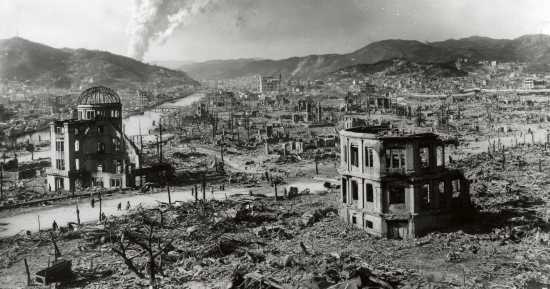
The Hiroshima And Nagasaki Day Quiz begins in a moment of reflection, honoring two cities that transformed the world’s understanding of resilience and renewal, they desrve that. These cities, once marked by unimaginable devastation, became enduring symbols of hope and determination. Over the decades, Hiroshima and Nagasaki rebuilt themselves into thriving centers of culture, education, and peace advocacy. Their journeys remind the world that healing is not only possible but also powerful. Festivals, memorials, and educational programs continue to bring communities together in shared remembrance. Through this history, the spirit of progress and unity shines clearly.
Each year, Hiroshima and Nagasaki Day inspires people around the world to pause and remember the many lives that we should not have lost. Commemorations include ceremonies, the ringing of peace bells, and the release of paper lanterns across rivers, symbolizing wishes for a future free of conflict. These events unite citizens, leaders, and visitors in a shared moment of reflection and learning. They offer a chance to connect past lessons to present goals for global understanding. In these moments, history feels alive and deeply personal. The day is not just about memory it is a call for a better, wiser future.
7 Serious Facts About Hiroshima And Nagasaki Day
- The day is observed annually in both cities to honor history and promote peace.
- Commemorative events include ceremonies attended by world leaders and peace advocates.
- Memorial parks in both cities feature monuments dedicated to reflection and education.
- Peace museums provide extensive resources on historical events and their global impact.
- Educational initiatives continue to expand, involving schools and international organizations.
- The day has become a focal point for dialogue on diplomacy and conflict prevention.
- Both cities remain symbols of resilience and the transformative power of remembrance.
Both cities also represent the incredible human capacity for rebuilding and renewal. Urban landscapes once erased were reshaped into vibrant spaces filled with life, art, and innovation. Peace museums stand beside bustling neighborhoods, bridging remembrance with modern progress. Schools teach younger generations how history informs their responsibility to the future. Visitors walk streets lined with cherry blossoms, a symbol of both fragility and strength. Through their example, Hiroshima and Nagasaki offer a living blueprint for resilience.
Commemorations and Cultural Impact
The annual Hiroshima and Nagasaki ceremonies are powerful reminders of shared humanity. Memorial parks draw people from across the globe to honor lives lost and reflect on the lessons history has left behind. Each event emphasizes peace education, inviting communities to participate in workshops and dialogues. Lantern-floating ceremonies illuminate rivers in breathtaking displays of light and hope. These cultural traditions connect history to the present in ways that words alone cannot capture. They transform remembrance into a living, unifying experience.
Art also plays an important role in how these cities remember and teach. Murals, sculptures, and installations reflect both loss and the strength that followed. Many works are created by local artists who draw inspiration from community stories. These pieces turn public spaces into powerful expressions of collective memory. By blending history and creativity, Hiroshima and Nagasaki keep their cultural legacy vibrant and meaningful.
International visitors often describe these commemorations as transformative. They leave with a renewed sense of purpose and an understanding of how remembrance can inspire action. Educational programs offered during these events encourage dialogue across borders. This approach fosters empathy and builds bridges between cultures. Through these efforts, Hiroshima and Nagasaki Day continues to grow in significance around the world.
Education and Peace Advocacy
Education is a cornerstone of Hiroshima and Nagasaki’s modern identity. Schools in both cities emphasize peace studies as a way to connect the past with the present. Students learn how history informs the choices they make today, reinforcing values of empathy and cooperation. This focus nurtures generations who view peace not as an abstract concept but as a responsibility. In doing so, these cities transform memory into meaningful action.
Peace museums in Hiroshima and Nagasaki serve as vital educational hubs. Their exhibits present firsthand accounts, historical documents, and personal artifacts. These immersive experiences allow visitors to connect emotionally with the past. Guided tours provide context that deepens understanding while encouraging dialogue. These institutions stand as enduring commitments to knowledge and reflection.
International partnerships further amplify this mission. Programs that bring students and educators together from across the globe help spread the lessons of Hiroshima and Nagasaki. By fostering collaboration, these initiatives extend the influence of peace education far beyond Japan. They ensure that the message of resilience and renewal continues to inspire future generations.
Hiroshima And Nagasaki Day – FAQ
Hiroshima and Nagasaki Day, observed on August 6 and August 9 respectively, commemorates the dropping of atomic bombs on these Japanese cities during World War II. It serves as a reminder of the devastating impact of nuclear weapons and promotes peace and nuclear disarmament globally.
Remembering Hiroshima and Nagasaki Day is crucial to honor the victims of the bombings and to learn from the tragic consequences of nuclear warfare. By reflecting on these events, we strive to prevent such atrocities from happening again and advocate for a world free of nuclear threats.
You can commemorate Hiroshima and Nagasaki Day by participating in peace vigils, attending memorial events, or educating yourself and others about the history and impact of the bombings. Observing a moment of silence or engaging in acts of peace and reconciliation are also meaningful ways to pay tribute.
